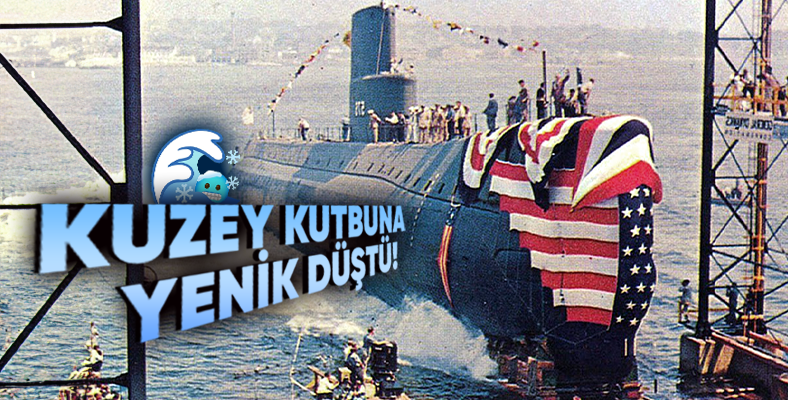In August 1931, the expedition team set sail for one of the coldest and most unexplored regions of the world: the North Pole. However, this adventure would become much more challenging and dangerous than expected.
The purpose of the journey is was to reveal the secrets hidden by the seas and ice. The vehicle the team used was the Nautilus, which many of us are familiar with.
About to go where no other submarine has gone The specially designed Nautilus has an important place in maritime history. But what happened that buried this special submarine in the dusty pages of history?
The Nautilus, the carrier of the team led by Hubert Wilkins, was a submarine built during World War I.
The bow of the Nautilus was designed to absorb collisions with ice. reinforced with heavy steel plates and concrete.
It will also allow the submarine to slide under the ice. added custom slide rails and hydraulic shock absorbers were installed to reduce impact effects.
Wilkins and his team set out with high expectations.
However, technical problems immediately arose. Nautilus, While navigating dangerous waters full of ice suffered a series of mechanical failures. The ice drills failed repeatedly, and many of the submarine’s other new features were similarly compromised. It was far from reliable.
Application of new technologies to a tired and old submarine It frequently caused problems. During the Atlantic crossing, the Nautilus was buffeted by violent storms of the North Atlantic.
The submarine was cramped and uncomfortable. Most of the crew had to spend time standing because there was no place to sit.
Although the single toilet and limited number of bunk beds attempted to provide some comfort in the harsh conditions The conditions inside the submarine were unbearable. The crew was tired and morally depleted.
The expedition faced ever more problems.
Nautilus Due to her mechanical problems, she frequently had to return to port for repairs. The submarine’s ability to proceed under the ice was also limited.
Then like a diving rudder With the loss of a vital piece Wilkins and his team had to face a difficult decision… namely, the mission would be terminated.
The Nautilus was damaged enough to require more repairs than before and It was not worth saving.
Thus, the first nuclear powered submarine We had to say goodbye to Nautilus.
Our other content that may interest you:
RELATED NEWS
How Did the Huge Nazi Submarine, Full of Numerous Technological Features, Sink Due to a Simple Toilet Malfunction?
RELATED NEWS
Why Do Submarines Have Oval Noses? Wouldn’t they go faster if they were pointy?
RELATED NEWS
The Secret Weapon Developed by the Japanese to Sneakily Destroy American Cities: Submarine Aircraft Carriers
RELATED NEWS
When You Learn How Submarines Appeared You Say “Where are you?” You Can’t Help Saying
RELATED NEWS
